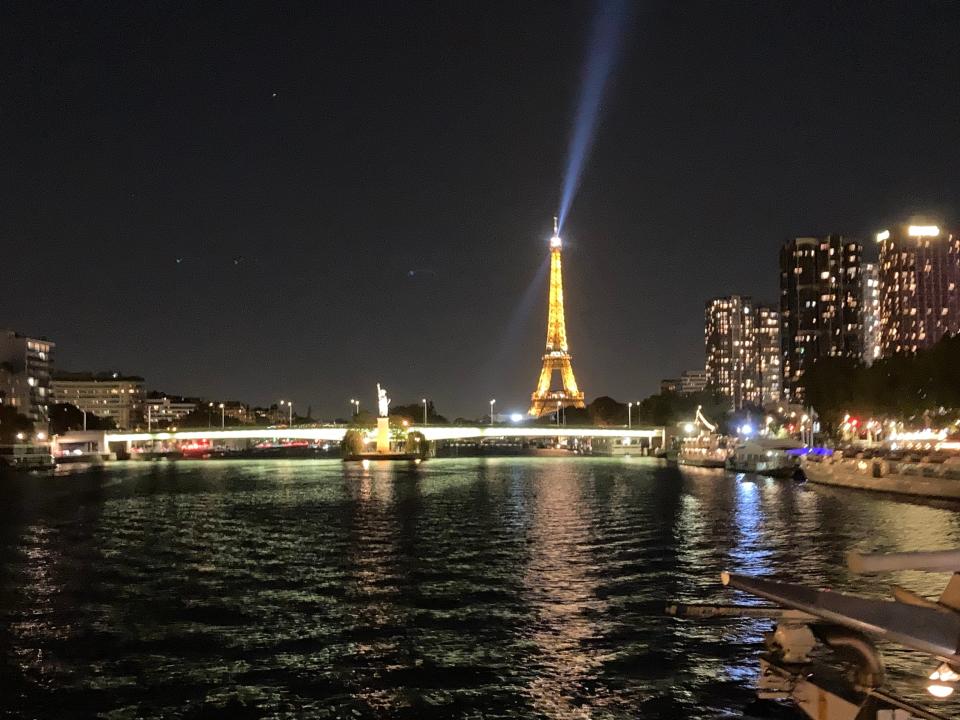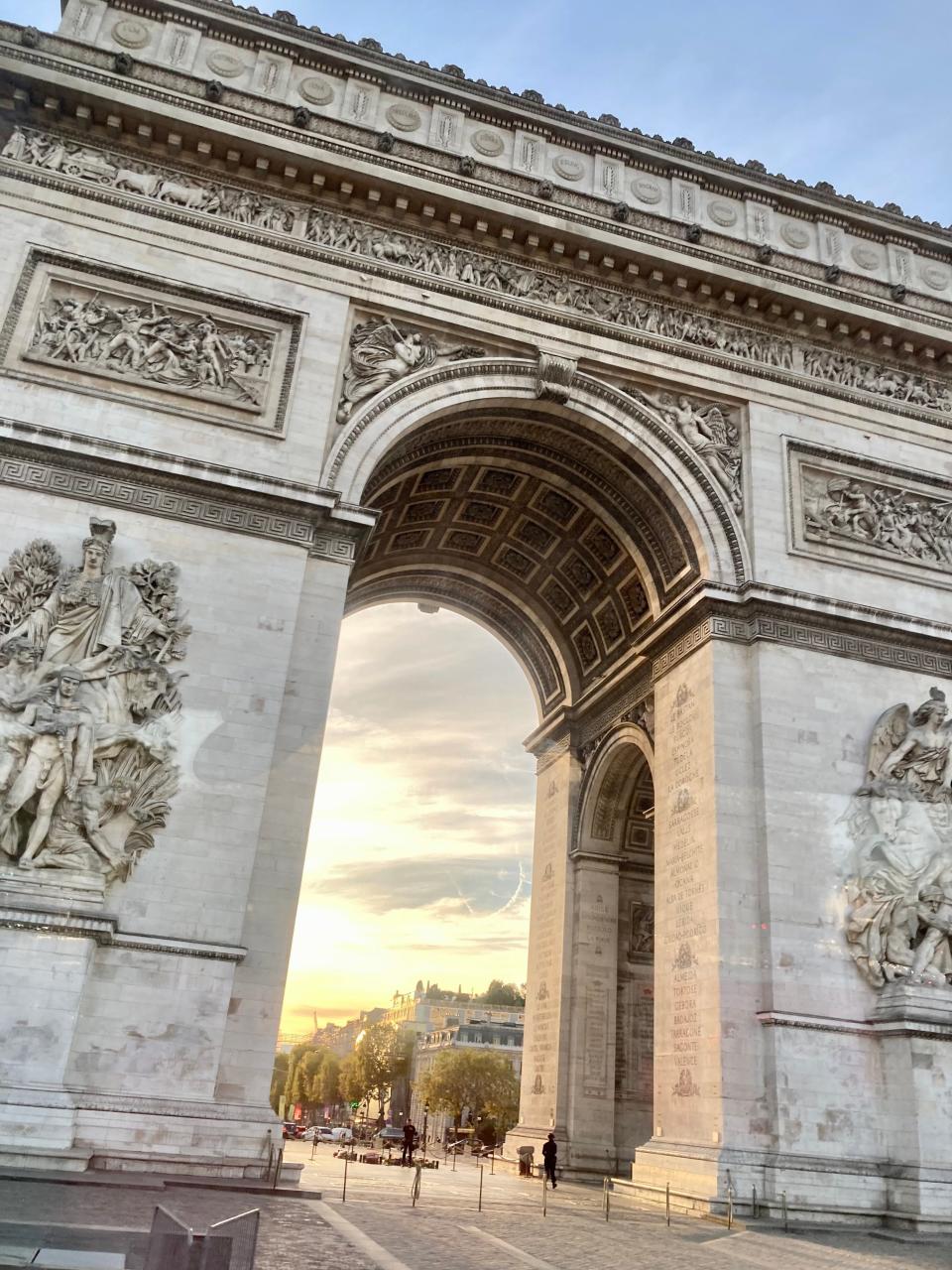Paris for beginners; a basic visitors guide for the City of Light
Twenty-four years ago, we spent nine days in Paris, working out of a Frommer’s Guidebook. That self-guided trip worked, but about half the time, we were either confused about our whereabouts or lost. This time, we were in France for two weeks, where our river cruise would include 5 days in Paris and 10 days cruising the Seine River to Normandy. All our days would be directed by professional guides, something new to treasure at this stage in our lives.
From this trip, I’ve tried to outline a first-time Paris visitor’s guide. It’s wise for travelers to outline their key targets in advance - is your trip devoted to seeing the sights, touring the museums, fine arts and fashion, food and wine, sports, or the Parisian laid-back lifestyle?
Before our Grand Circle Cruise (from Paris down the Seine River to Normandy and the D-Day beaches), we had booked the pre-trip tour of Paris. So, off we went, flying from Sacramento to Atlanta, then on to Charles DeGault Airport, and then shuttled to the Citadines Center Saint Germain Hotel. Just blocks down the Seine River from Notre Dame Cathedral; only a few blocks further downriver is the Louvre Museum. From this location on the river, we could virtually walk to about 80% of the critical destinations we wanted to revisit.
Paris, with an estimated population of almost 2.2 million and a metro area of approximately 12 million, makes up 20% of the total French population. The city is the fifth most populated in the European Union and one of the more densely populated cities in the world. With scores and scores of major attractions, many are within short walking distance. The city was among the first to electrify and expand its street lights, earning it the title “City of Light.”

For centuries, Paris has been a center of the world’s finance, diplomacy, commerce, fashion, gastronomy and culture. We have seen many of the key attractions the City of Light offers, spread amongst the city's 20 arrondissements (districts). The city’s Metro (subway), the second largest in Europe, will get you quickly around the city within a few blocks of your destination, all hours of the day.
On our first evening of our Paris pre-trip, some of our fellow travelers booked dinner and a cabaret show at the famous Moulin Rouge, quite a stunning performance. We chose to explore restaurants blocks from our hotel, choosing a lovely sidewalk café near a Metro entrance/exit, allowing us to people-watch Parisians; all in all, it was a lovely evening.
Museums? It’s said you could do a different museum every day for a year and not run out of destinations to visit. Start with the Louvre or the d’Orsay Museum. If fine arts or museum experience is your primary focus, it helps to build a target list in advance with so many choices. The Trip Advisor app is always helpful, as is the Paris official website.
At the Louvre, the largest and most visited museum in the world, take the time to home in on the Mona Lisa and Michelangelo’s statue of David. Leonardo da Vinci painted the Mona Lisa in the early 1500s by an Italian noblewoman, eventually acquired by the French nation and permanently displayed in the Louvre since 1797.
Musée d'Orsay is found on the Left Bank of the Seine. Sited in the former Gare d'Orsay, a Beaux-Arts railway station built 1898-1900, the museum holds mainly French impressionist and post-impressionist art dating from 1848 to 1914, including paintings, sculptures, furniture, and photography. While still a vast museum, it feels more intimate than the Louvre.
With one full day in Paris, we took in the Louvre (briefly), the Musee d'Orsay, the Eiffel Tower, and the Palace of Luxenberg and Luxenberg Gardens, though we hiked over 10 miles that day. With lovely sidewalk cafés at almost every intersection, there is no lack of libation stops along your way.
The Eiffel tower is visible from many locations in the city. Built for the 1889 World’s Fair and designed to last just 20 years, the tower was so famous and profitable that it was never removed. Take an evening stroll along the river (or a river cruise) and admire the Eiffel Tower with sparkling, twinkling lights at night for a truly memorable experience.
Notre Dame de Paris Cathedral (meaning "Our Lady of Paris"), referred to simply as Notre Dame, is a medieval Catholic cathedral built on an island in the Seine River, a fine example of French Gothic architecture. Attributes such as the pioneering use of ribbed vault ceilings and flying buttresses, beautiful rose windows, and over-achieving sculpture set it apart from other cathedrals nationwide.

A devastating fire in April 2019 has closed the cathedral to a complicated and expensive renovation, not to be completed until sometime late in 2024. One can still circle the cathedral to see the construction work progressing.
On another full day, we visited the Sacré-Cœur Basilica on the summit of the butte of Montmartre. This beautiful church is one of the more popular tourist destinations in the city, while the Montmartre District offers intriguing shops and restaurants circling the hills.
Once again, first-time visitors should organize their thoughts and plans before venturing into this lovely City of Light - and plan a series of stops for food and drink to enjoy the laid-back Parisian lifestyle so closely aligned with hundreds of outdoor sidewalk cafés.
For more information
Grand Circle Cruises, GCT.com; Paris official visitor site, parisjetaime.com; TripAdvisor travel app.
Contact Tim, tviall@msn.com; where are you traveling?
This article originally appeared on Visalia Times-Delta: Paris for beginners; a basic visitors guide for the City of Light

